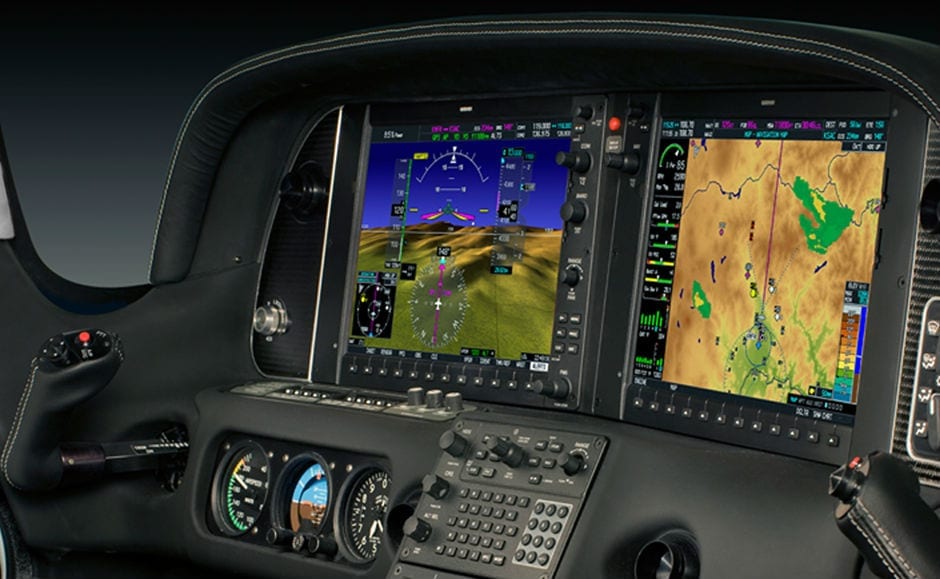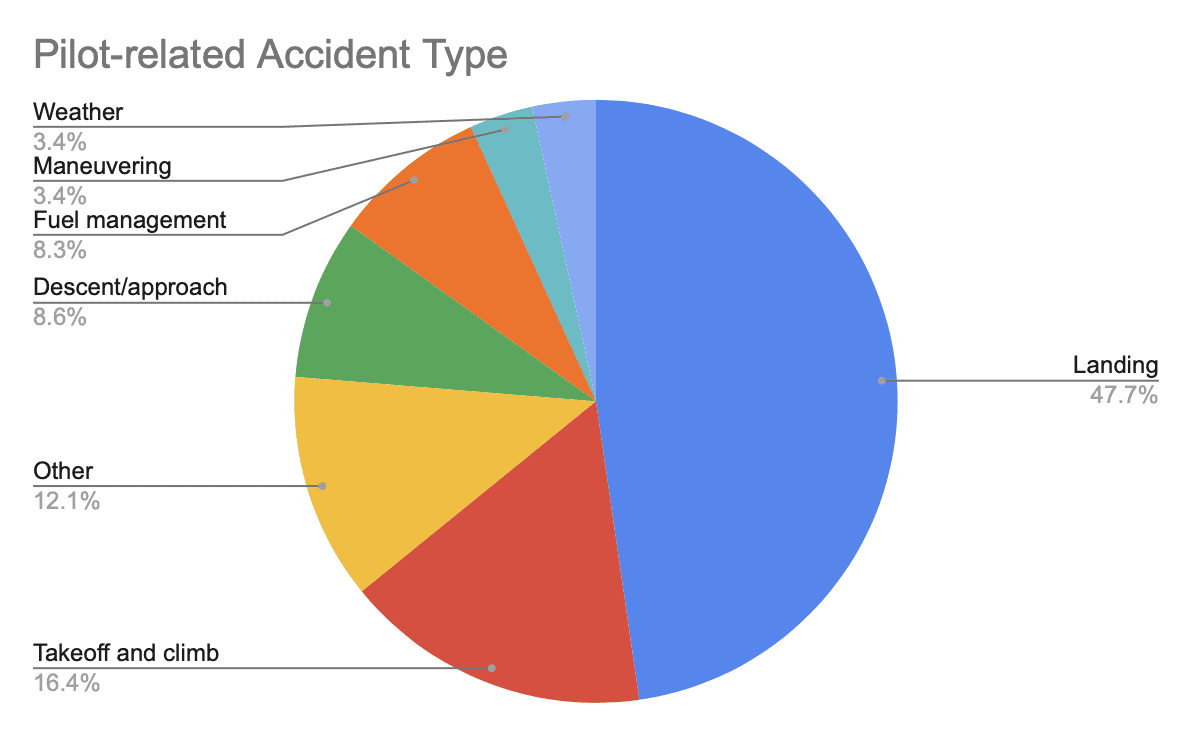
The joy of IFR
John's blogReally flying IFR (not just earning the rating) is probably the most challenging activity you can do these days, unless you’re a heart surgeon or a Navy SEAL. Flying blind in the clouds, managing dynamic weather, and keeping up with air traffic control is like a mental treadmill that’s permanently set on 10—there is no stopping to take a break, and losing focus can lead to real pain. But that's exactly why it's so fun.

Top 10 articles of 2022 on Air Facts
John's blogIt was another busy year at Air Facts: we published 156 articles in 2022, written by more than 100 different writers. Many of these writers were first time contributors at Air Facts, just pilots with a story to tell or a lesson to share. Hopefully you're enjoying a moment to relax this holiday season. While you're doing that, enjoy the 10 most popular articles of 2022 below.

A safe pilot is a humble pilot—lessons from the Cirrus community
John's blogAfter a recent weekend immersed in the world of Cirrus airplanes, I have renewed appreciation for the old saw: plus ça change, plus c'est la même chose. No matter how you slice the data, and no matter what airplane you fly, the most important driver of aviation safety continues to be the person in the left seat. Even with all the latest technology—in fact, maybe especially with all the latest technology—there’s no substitute for a humble pilot.

What does “loss of control” mean? Probably not what you think
John's blogBefore solving a problem, it helps to be clear about definitions. What does loss of control actually mean? The FAA says it’s “an unintended departure of an aircraft from controlled flight.” That definition is so broad as to be useless, like saying the leading cause of car crashes is “unintended rapid deceleration.” Unfortunately, if we’re trying to dramatically reduce fatal accidents, solving loss of control isn’t nearly enough.

How to improve your aviation decisions
John's blogAt some point in a pilot’s flying career, usually around 250 hours, the primary challenge shifts from a physical one to a mental one. When you finally master crosswind landings and learn how to use all the avionics in your airplane, what’s left is the never-ending task of making good decisions. How can we improve this skill?

YouTube, Top Gun, and aviation culture
John's blogIs YouTube good or bad for general aviation? That seems to be a popular hangar flying debate these days, especially since a number of high profile pilots have found themselves in hot water with the FAA over the last month. The answer may be more important for the future of GA than you think.

What’s wrong with Pilatus PC-12 pilots?
John's blogA key reason for the PC-12’s popularity has been its stellar safety record, one of the best in all of general aviation. So any effort to answer the question, “what’s wrong with Pilatus PC-12 pilots?” has to begin with: not much. But accidents do happen, including a recent one off the coast of North Carolina. That means it’s worth our time to examine the safety record of a specific airplane type, even if you don’t fly that model.

Aviation’s roaring ’20s? A case for GA growth
John's blogIs the current GA boom just temporary, one that will soon break hearts and bank accounts, or has something fundamentally changed? I think we should seriously consider the possibility that general aviation has some steady tailwinds. Don’t get me wrong, I’m not convinced we'll reach the dizzying heights of the late 1970s, but there are some long term trends that could make light airplanes more attractive.

Top 10 articles of 2021 on Air Facts
John's blogThis year was another busy one at Air Facts: we celebrated our 10th year online by publishing over 250 articles, including personal stories and lively debates, first solos and harrowing military adventures. For now, we wish you a safe and happy new year—and hopefully one filled with flying. Enjoy the 10 most popular articles of 2021.

The datalink weather revolution: safer and less stressful flights
John's blogI put the iPad down after a few minutes and said to the other pilot flying with me, “we’ll just keep going and see how that line develops when we get closer.” I suspect that’s a common phrase for many Air Facts readers who fly cross countries—and indeed, this was just another day at the office—but that doesn’t make it any less miraculous. Quite simply, datalink weather has changed how we fly.

It’s time to reform Obstacle Departure Procedures
John's blogWhat’s the most overlooked and misunderstood part of IFR flying? I nominate the obstacle departure procedure (ODP). While almost any instrument pilot can recite trivia like holding pattern entries or VOR test requirements—important but relatively rare procedures—many are quite shaky on ODPs. That’s a shame, because ignorance of this procedure can be fatal.

General aviation trends in charts—2021 update
John's blogFour years ago, I tried to capture the state of general aviation in 12 charts, covering everything from new airplane shipments to fatal accident rates. An industry as varied as general aviation cannot be summed up in a few charts, but sometimes graphics tell the story better than thousands of words. Many things have changed since 2017—some for the better—so I thought it was time for an update.

The right pilot mindset: realistic, not conservative
John's blogYou’ve heard the cliche: flying isn’t dangerous, it’s just unforgiving. The unforgiving nature of aviation has serious consequences, which we should remember every time we sit in the left seat. The stakes are simply higher than in almost any other part of life, so our day-to-day risk management tools are not enough.

Sustainable aviation and the trouble with high performance airplanes
John's blogFor many environmental activists, politicians, and even public company CEOs, the goal is not to limit the damage but to achieve net zero emissions. This campaign is starting to achieve real results: the European Union is expected to ban internal combustion engines in new cars by 2035. So whether you think climate change is an existential threat or a hoax doesn’t really matter—it is a serious issue for the aviation industry, at least from a public relations standpoint.

Rethinking light airplane limits
John's blogThere are rumblings of an important announcement this summer, perhaps at Oshkosh. The headline is a new group of airplanes, somewhere between an LSA and a traditional Part 23 airplane, to be called Light Personal Aircraft (LPA). This would offer a major boost in performance, including higher gross weight, more powerful engines (perhaps up to 200 hp), and the option for retractable gear.

What if flying cars are just a bad idea?
John's blogBillions of dollars have been invested in flying car startups over the past decade, and if the press releases are to be believed, tilt-rotor aircraft will soon be a reality in American cities. But I’m increasingly convinced that Americans don’t actually want a flying car in the first place. Maybe the problem isn’t the technology, but the product-market fit, to use the popular venture capital term.

Ten years of Air Facts
John's blogTen years is a long time on the internet, so the fact that Air Facts has survived is an achievement, but it’s done much more than that—it has thrived, and grown into its own bustling community. In fact, it has succeeded beyond my wildest dreams, with over 1 million visitors last year from all around the world. Even more satisfying are the 1,900 articles we have published since 2011, written by 760 different writers.

Do we want flying to be hard or easy?
John's blogEarning a pilot certificate is one of the most difficult things you can do as a hobby. While technology has made many activities easier these days, pilots still have to learn about magnetos and Morse code, bank angle and Bernoulli. For some aviation boosters, that’s a problem; for others, it’s an opportunity.

What I learned about flying in 2020
John's blogThe end of the year may be a magical time for personal reflection, but my latest trip down memory lane was caused by something much more prosaic: filling out my annual insurance renewal form. Besides a feeling of gratitude for the hours I logged this year—and a burning desire to reschedule some canceled trips in 2021—I came away with a few lessons learned. None of these are exactly revolutionary, but at least a few were surprising to me.

GA safety trends: what should we worry about?
John's blogFAA regulations are written in blood, according to the cliche, but it doesn’t seem like flight training reacts to accidents quite so consistently. That’s a mistake. While being a good pilot means more than just avoiding an accident, that goal is certainly a good place to start. That mindset is what makes accident statistics so valuable for general aviation, and the recently released Nall Report from the AOPA Air Safety Institute is a gold mine.
